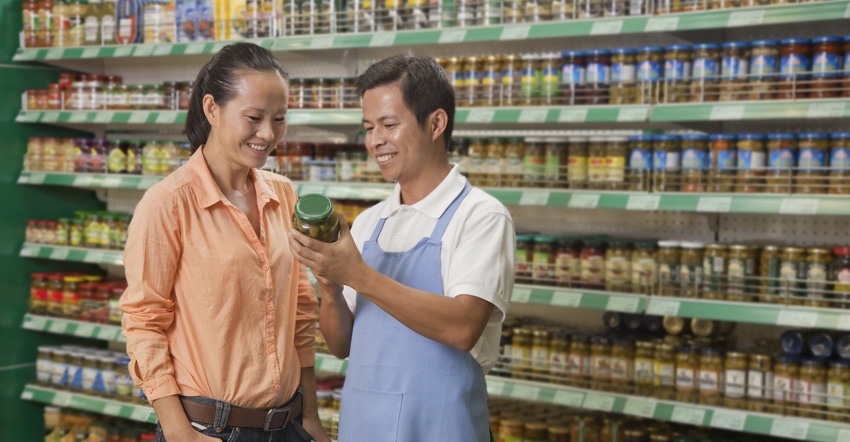A shoppers panel is one tool for retailers to learn what shoppers like and don't like about a store's product selection, signage, merchandising and more.
May 8, 2023

Today’s natural products retailers use all sorts of smart strategies to collect intel on their customers. Whether they track purchasing patterns through a loyalty program, tabulate e-newsletter engagement or offer an old-school, in-store comment box, the goal is typically the same: to find out what shoppers think of the store and understand how to serve them better.
While any of these methods can produce useful information, Lisa Mabe, founder and CEO of Green Purse PR, recommends another impactful tactic: creating a shoppers panel. “This is a hand-selected group of people who shop at your store frequently and have opted in to answer questions and give you feedback about your store,” she says.
“You want to identify these shoppers’ needs, learn how their needs evolve and change, and determine how you can continuously meet those needs,” Mabe says. “Also find out how they learn about products, how they shop inside your store and how they use the products. If you can make your store even better for your panelists and continuously make them feel special, that’s what you want.”
Plus, if retailers can wow this select bunch, they’ll likely impress other shoppers and potentially boost their bottom line.
Building the best panel
Retailers shouldn’t recruit “just any old shopper” onto their panel, Mabe says.

As for how many people to invite, Mabe recommends that small and midsized natural products retailers start small. That might mean signing up eight, 12, 15 or even 20 frequent shoppers, depending on the size of your customer base and your team’s bandwidth.
But rather than focus on panel size, prioritize panel diversity.
“Ideally, you want to include shoppers who spend a lot of money at your store, but you also want a balance of consumers to give you a wide variety of feedback,” Mabe says. “You can slice and dice people however you want—parents versus nonparents, old versus young, single versus coupled. Just be sure to get a good mix of ages, genders, lifestyles and life stages.”
When asking shoppers to join your panel, outline the expectations. “Explain what being part of the panel means, how you are going to communicate with them and at what frequency,” Mabe says. “Ideally, also have them sign something to acknowledge that they are opting in to give you their data in terms of what they say.”
Also let them know what’s in it for them. Whether you’re requesting a full hour or just five minutes of their time, it’s imperative to give panelists something in return.
“It doesn’t have to be anything extravagant,” Mabe notes. “It could be a gift basket with sample-sized body care products. Or if you’re hosting an event with cheese and wine, then that is the thank you.” Most shoppers, she adds, will be thrilled with a store gift card.
Survey best practices
One of the most common ways retailers gather panelists’ likes, dislikes, impressions and suggestions is by sending them surveys. But if you go this route, only survey them periodically, Mabe advises. You don’t want to bother your panelists unless you know it’ll be worth your time and theirs.
“Many retailers do it based on seasonality or around big purchasing timeframes,” she says. “For example, they may send a questionnaire a few months ahead of back-to-school time to get a sense of these shoppers’ needs, what products they want, how they’d like to see things merchandised, etc.”
If conducting multiple surveys per year seems daunting, “even doing it annually is better than nothing,” Mabe says. “It doesn’t have to be huge project that eats up a lot of time.”
What does eat up a lot of time, however, is asking too many open-ended questions—“because then you need to read a whole bunch of open-ended responses,” Mabe says. Parsing through all that data can be overly taxing, so instead, craft only a few select open-ended questions to include.
On the flipside, “avoid yes-or-no questions altogether because those do not provide clarity,” Mabe adds. “It’s not helpful for panelists to just say you’re doing great. Dig into something specific to give them something to react to.”

Personalized research
While surveys may be the easiest way to get panelists’ feedback, more personalized strategies are also worth trying.
“I encourage all retailers to shop along with panelists to see what they are buying and why,” Mabe says. “This can be very informative, even if they are done only every once in a while.”
When doing a shop-along, observe the panelist’s patterns, pose lots of questions and write everything down. You can even ask them to accompany you to specific aisles or departments to get their thoughts on layout, signage, product mix and more.
Mabe suggests asking specific questions during the shop: “‘Do you like the way things are laid out and labeled? Do the sign colors speak to you? Have you even noticed them before? Have you noticed the standards that mirror down to products?’ If you’ve invested time and money into specific signage that highlights the product attributes you think shoppers want, you should learn whether shoppers actually care about or even notice it.”
Another option is to host a sampling event to entertain panelists while peppering in pointed questions about your store. Hold the function either inside the store, such as in a community room, or at a nice spot nearby—maybe even a local vendor’s farm or production facility. Mabe also suggests partnering with a wine, cheese or other brand you’re looking to promote; that company could potentially share in the costs as well.
“A sampling event is a nice, authentic way to bring people in and make them feel special,” Mabe says. “Think of food festivals, where people are in a good mood while getting wined and dined, so they are more likely to open up. The benefit is you’ll get the information you want out of your panelists, and it’ll be a great experience that will stick with them. They’ll tell other people about it and likely spread the news to potential new shoppers.”
About the Author(s)
You May Also Like




